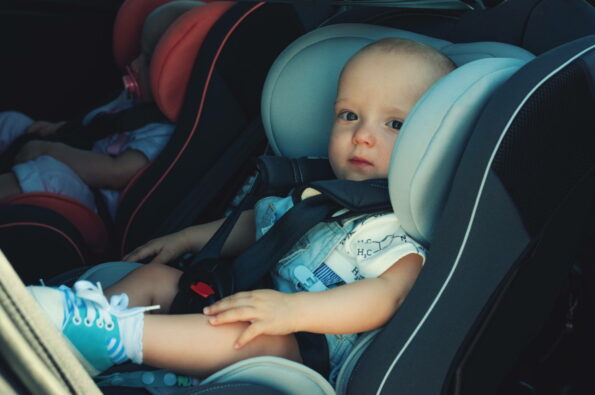So, you’ve had a surprise: what you thought was one baby is actually two, or even three! Say goodbye to your sports car aspirations, you’re going to need something sensible. Sensible means bigger, and bigger often means greater fuel consumption and fewer parking options.

Storage
Strollers for twins or triplets are much bigger than a regular stroller for one baby. Small hatchbacks won’t cut it as the width and depth of the boot won’t leave you much space for anything else, bearing in mind that it won’t be possible to use the rear seats for storage.
Your options are a medium hatchback (e.g. VW Golf, Toyota Corolla), a large hatchback (e.g. Kia Stinger, Audi A5), a medium station wagon (e.g. Mazda 6), a large station wagon (e.g. BMW 5 Series, Subaru Outback), a medium SUV (e.g. Toyota RAV4), a large SUV (e.g. Hyundai Santa Fe), or some kind of minivan (e.g. Toyota Alphard). There are also crossover vehicles such as the Volvo XC60 and Kia Sportage.
Utes don’t tend to be very practical due to an inaccessible loading space.
From experience, a boot volume of 500+ litres is ideal, although you can get by on less.
Reliability
You might put up with some foibles if the vehicle is just for you, but the last thing you want is to be stranded on the side of the road with two screaming toddlers. All cars have the potential to break down, but some are notably more reliable than others. You can get reliability statistics by searching online. Some cars have electronics that are more prone to have errors, some have weaker engines or known issues that happen at certain points that might add a couple of grand to a service.
You can always opt for a warranty if you are worried about breakdowns and how much they might cost to fix.
Budget
With two or three more mouths to feed, plus other childcare costs, and the potential of one of you not being able to bring in an income for a while, the overall vehicle cost, fuel economy, insurance rates and servicing costs all come into play. Some vehicles are more expensive to service than others, and you’ll need to consider whether there are options in your local area.
Fuel economy
Fuel economy varies wildly. The figures given by manufacturers are based on the engine running on a test bed and are not reliable in the real world. The biggest determinant for your fuel economy is your driving style, however, a smaller vehicle with a smaller profile is more likely to have better fuel economy, i.e. a hatchback is likely to give you better mileage than an SUV.
Tyres and parts
Remember that the wider and lower the profile of your tyres, the more expensive they are to replace; while large alloys and elastic bands for tyres look cool, they’ll stretch your wallet when the time comes to buy a new set.
Servicing
Check the service intervals. Some vehicles can go 15-20,000km between services, while others need one every 10,000km, which effectively doubles your labour costs.
A battery-powered vehicle could be an option, but are they big enough unless you go for the largest (and most expensive)? Battery-powered cars don’t need an engine service, but there is the risk you might need to change the batteries eventually, and that’s expensive.
Features
Newer vehicles tend to come with more features that are useful for kids. Things like multi-zone air conditioning can help keep the rear of the vehicle at the optimal temperature. Some vehicles have screens in the rear of the headrests (not useful until your kids can travel facing forwards, though).
Some vehicles have doors that open wider than others. Obviously, you’ll want a vehicle with four doors, not two, given that you’ll be lifting children in and out.
Safety
Once you’ve had kids, you might find yourself with a new appreciation for safety features that just aren’t available in older cars. Things like forward collision warning and blind spot monitoring help reduce the risk of an accident. You might also be considering a vehicle with a better crash test rating. Remember that crash test ratings from small cars are comparisons within that segment and cannot be compared with large cars or SUVs. Crash tests from 2012 cannot be compared with crash tests from 2022, either as the rules and requirements have become more stringent over time.
The future
Now that your family has expanded, what will your future life look like? Are overseas holidays going to be replaced by caravan holidays (in which case you’ll need a vehicle capable of towing a caravan).
Will you be moving house, and if so, will that car still be practical? Are you planning on having even more children?
